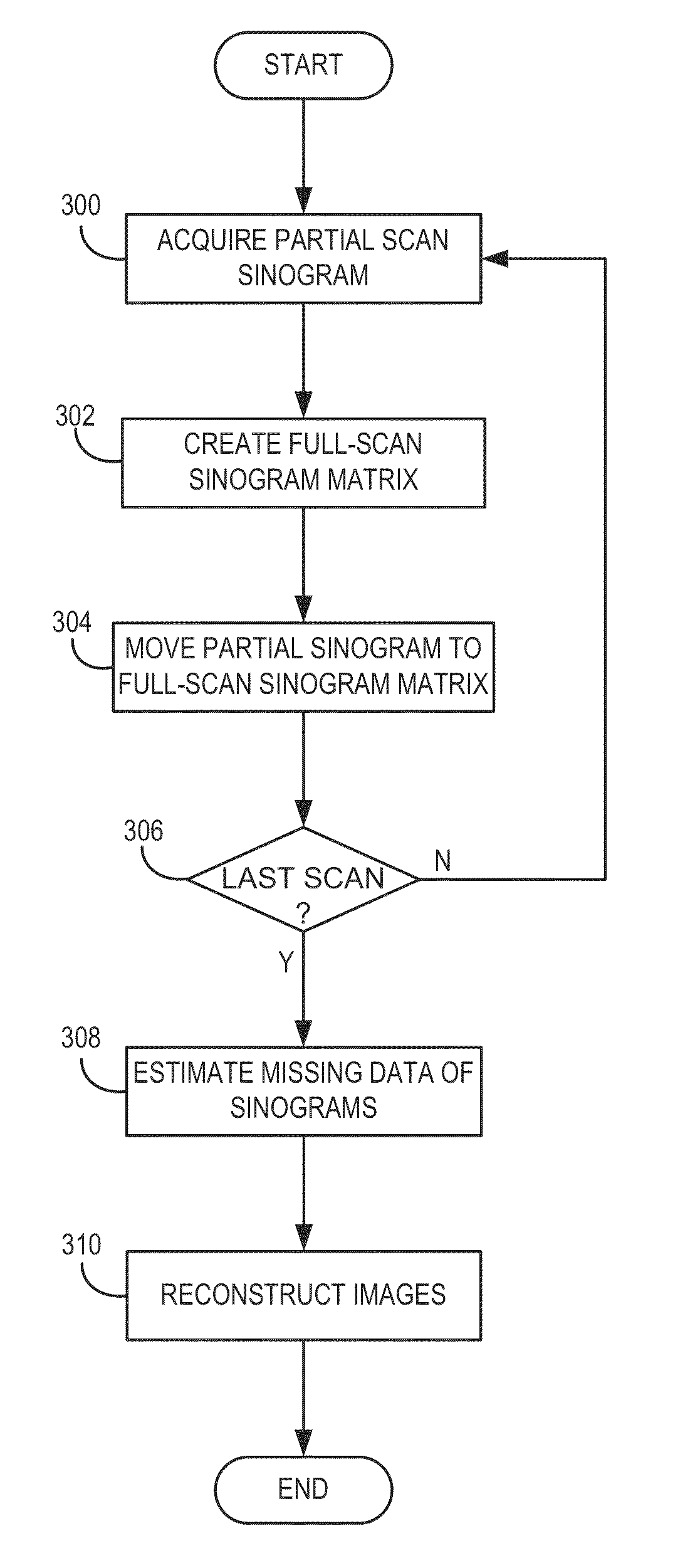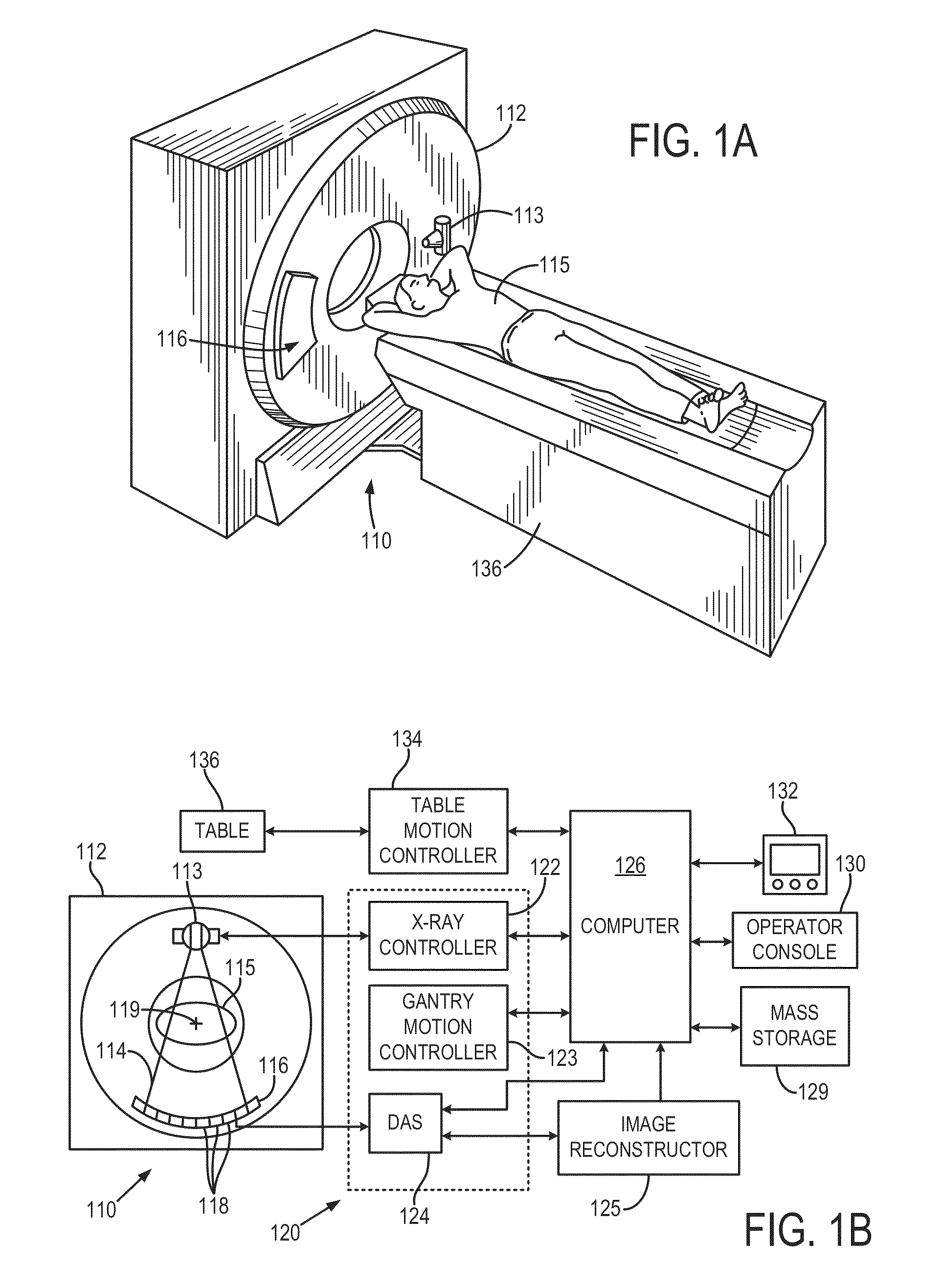System and method for partial scan artifact reduction in myocardial CT perfusion
a computed tomography and reconstruction artifact technology, applied in the field of medical imaging, can solve the problems of difficult cardiac ct, inability to guarantee that the same angular data range (or view angle) is covered by each consecutive partial scan, and variations in the number of artifactual ct over time, and achieve the effect of introducing additional doses
- Summary
- Abstract
- Description
- Claims
- Application Information
AI Technical Summary
Benefits of technology
Problems solved by technology
Method used
Image
Examples
Embodiment Construction
[0020]With initial reference to FIGS. 1A and 1B, an x-ray computed tomography (“CT”) imaging system 110 includes a gantry 112 representative of a “third generation” CT scanner. Gantry 112 has an x-ray source 113 that projects a fan-beam, or cone-beam, of x-rays 114 toward a detector array 116 on the opposite side of the gantry. The detector array 116 is formed by a number of detector elements 118 which together sense the projected x-rays that pass through a medical patient 115. Each detector element 118 produces an electrical signal that represents the intensity of an impinging x-ray beam and hence the attenuation of the beam as it passes through the patient. During a scan to acquire x-ray projection data, the gantry 112 and the components mounted thereon rotate about a center of rotation 119 located within the patient 115.
[0021]The rotation of the gantry and the operation of the x-ray source 113 are governed by a control mechanism 120 of the CT system. The control mechanism 120 inc...
PUM
 Login to View More
Login to View More Abstract
Description
Claims
Application Information
 Login to View More
Login to View More - R&D
- Intellectual Property
- Life Sciences
- Materials
- Tech Scout
- Unparalleled Data Quality
- Higher Quality Content
- 60% Fewer Hallucinations
Browse by: Latest US Patents, China's latest patents, Technical Efficacy Thesaurus, Application Domain, Technology Topic, Popular Technical Reports.
© 2025 PatSnap. All rights reserved.Legal|Privacy policy|Modern Slavery Act Transparency Statement|Sitemap|About US| Contact US: help@patsnap.com



